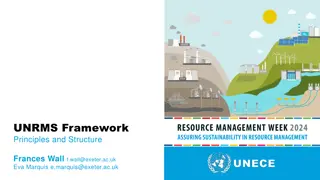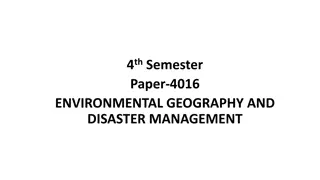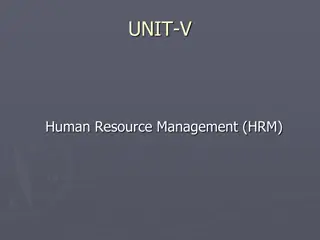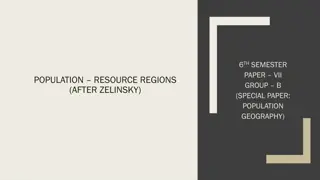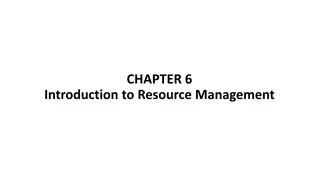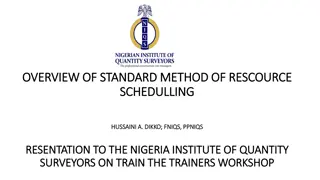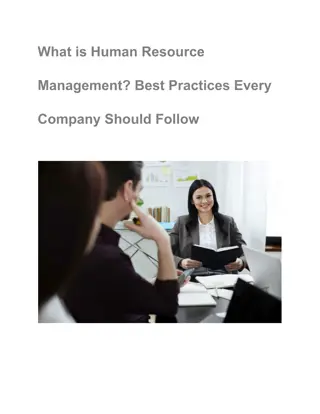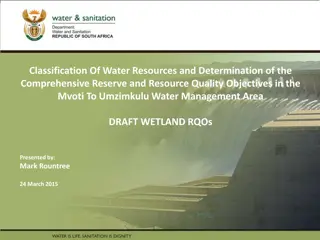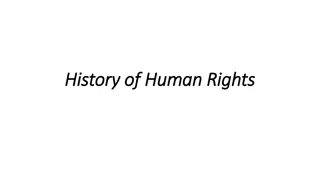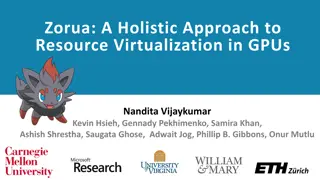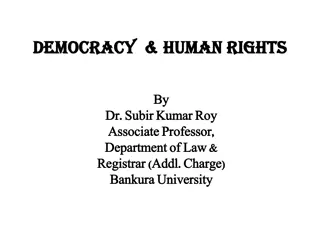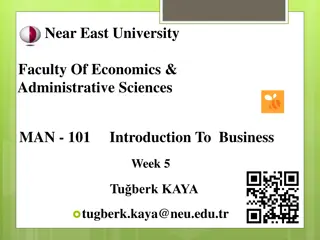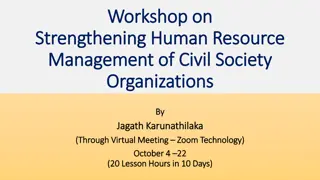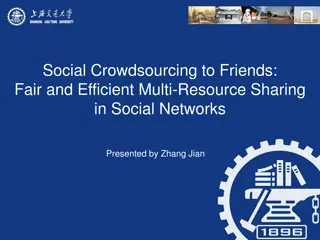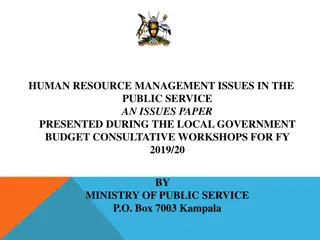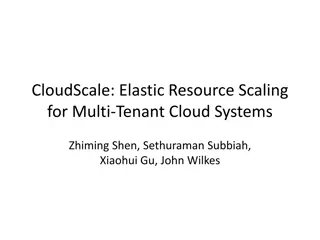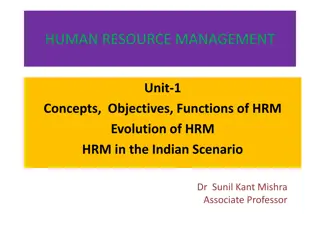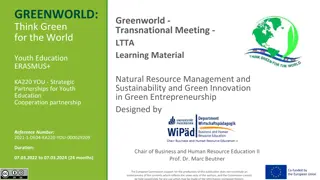HUMAN RESOURCE MANAGEMENT
Human Resource Management (HRM) is the strategic approach to effectively and efficiently manage people in an organization. It involves recruiting, training, and motivating employees to achieve organizational goals while ensuring compliance with laws and regulations. HRM aims to optimize the use of available skilled workforce and enhance employee performance.
Uploaded on Feb 16, 2025 | 0 Views
Download Presentation

Please find below an Image/Link to download the presentation.
The content on the website is provided AS IS for your information and personal use only. It may not be sold, licensed, or shared on other websites without obtaining consent from the author.If you encounter any issues during the download, it is possible that the publisher has removed the file from their server.
You are allowed to download the files provided on this website for personal or commercial use, subject to the condition that they are used lawfully. All files are the property of their respective owners.
The content on the website is provided AS IS for your information and personal use only. It may not be sold, licensed, or shared on other websites without obtaining consent from the author.
E N D
Presentation Transcript
HUMAN RESOURCE MANAGEMENT: Human: refers to the skilled workforce in an organization. Resource: refers to limited availability or scarce. Management: refers how to optimize and make best use of such limited or scarce resource so as to meet the organization goals and objectives. Therefore, human resource management is meant for proper utilisation of available skilled workforce and also to make efficient use of existing human resource in the organisation. Human Resource Management is the process of recruiting, selecting, inducting employees, providing orientation, imparting training and development, appraising the performance of employees, deciding compensation and providing benefits, motivating employees, maintaining proper relations with employees and their trade unions, ensuring employees safety, welfare and healthy measures in compliance with labour laws.
CONCEPT OF HRM Human resource management (HRM or HR) is the strategic approach to the effective and efficient management of people in a company or organization such that they help their business gain a competitive advantage. It is designed to maximize employee performance in service of an employer's strategic objectives.
OBJECTIVES OF HUMAN RESOURCE MANAGEMENT 1. Societal objective. To be socially responsible to the needs and challenges of society while minimizing the negative impact of such demands upon the organization. The failure of organizations to use their resources for society's benefit may result in restrictions. For example, societies may pass laws that limit human resource decisions.
2. Organizational objective. To organizational effectiveness. HRM is not an end in itself; it is only a means to assist the organization with its primary objectives. Simply stated, the department exists to serve the rest of the organization. recognize that Human resource management exists to contribute to
3. Functional objective. To maintain the department's contribution at a level appropriate to the organisation's needs. Resources are wasted when Human Resource Management is more or less sophisticated than the organisation demands. A department's level of service must be appropriate for the organisation it serves.
4. Personal objective. To assist employees in achieving their personal goals, at least insofar as these goals enhance the individual's contribution to the organisation. Personal objectives of employees must be met if workers are to be maintained, retained and motivated. Otherwise, employee performance and satisfaction may decline, and employees may leave the organisation.
ROLE OF HRM 1. Advisory Role: HRM advises management on the solutions to any problems affecting people, personnel policies and procedures. (a) Personnel Policies: Organization Structure, Social Responsibility, Employment Terms & Conditions, Compensation, Career & Promotion, Training & Development and Industrial Relations. (b) Personnel Procedures: Relating to manpower planning procedures, recruitment and selection procedures, and employment procedures, training procedures, management procedures, compensation procedures, industrial relations procedures and health and safety procedures. development procedures, performance appraisal 2. Functional Role: The personnel function formulates personnel policies in accordance with the company s doctrine and management guidelines. It provides guidance to managers to help them ensure that agreed policies are implemented. 3. Service Role: Personnel function provides personnel services. These services constitute the main activities carried out by the personnel department, like payroll, disciplinary actions, etc, and involve the implementation of the policies and procedures.
ROLE OF HR MANAGERS 1. Humanitarian Role: Reminding moral and ethical obligations to employees. 2. Counsellor: Consultations to employees about marital, health, mental, physical and career problems. 3. Mediator: Playing the role of a peacemaker during disputes, conflicts between individuals and groups or management. 4. Spokesman: To represent the company in Media and other forums because he has a better overall picture of his company s operations. 5. Problem Solver: Solving problems of overall human resource management and long-term organizational planning. 6. Change Agent: Introducing and implementing institutional changes and installing organizational development programs 7. Management of Manpower Resources: Broadly concerned with leadership both in the group and individual relationships and labour-management relations.



